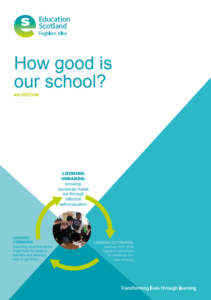QI 3.1 p49
How well do all staff know and understand GIRFEC, the wellbeing indicators, and the United Nations Convention on the Rights of the Child?
How well do all staff understand their role and responsibility in supporting learners’ health and wellbeing?
How well do we know and take account of local and national documents and guidance? How well do we ensure that all children feel safe, healthy, achieving, nurtured, active, respected, responsible and included?
How well do children and young people show consideration for others and demonstrate positive behaviour and relationships?
How well do we listen to and involve children and young people in making decisions about their wellbeing, their lives and their future?
How well do we ensure that all staff undertake regular professional learning around legislation, statutory requirements and codes of practice?
Can we be sure that all staff guidance is fully relevant and up-to-date?
How well do we communicate with parents, partners and learning across these key themes?
How well do we know the steps we have taken have improved outcomes for children?
How well can we demonstrate improved attainment for groups and individuals facing barriers to learning, including poverty?
Have we successfully established an inclusive learning environment? How do we know?
To what extent does our school celebrate diversity?
How well does our school ensure that the curriculum is designed to develop and promote equality and diversity, eliminate discrimination?
How do we ensure there is an ethos and culture of inclusion, participation and positive relationships across the whole learning community?



